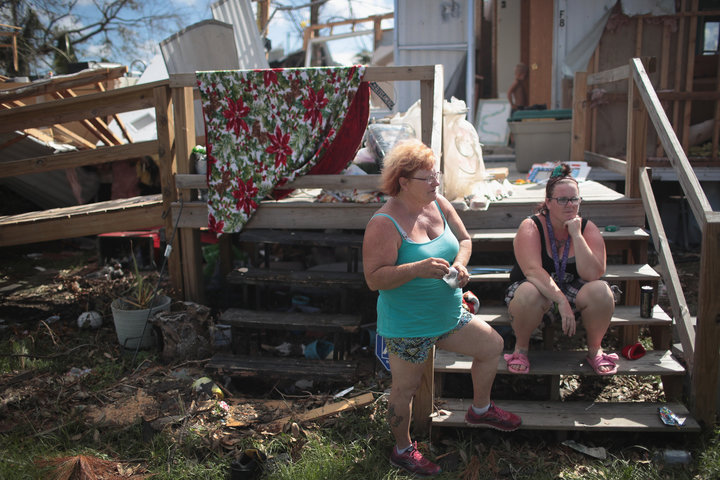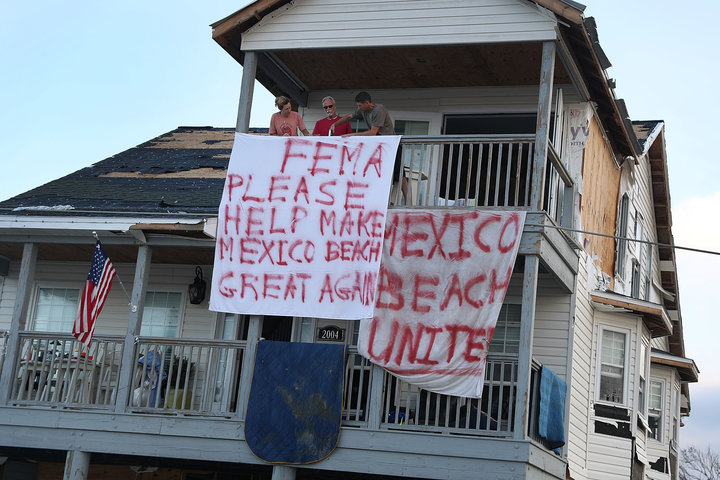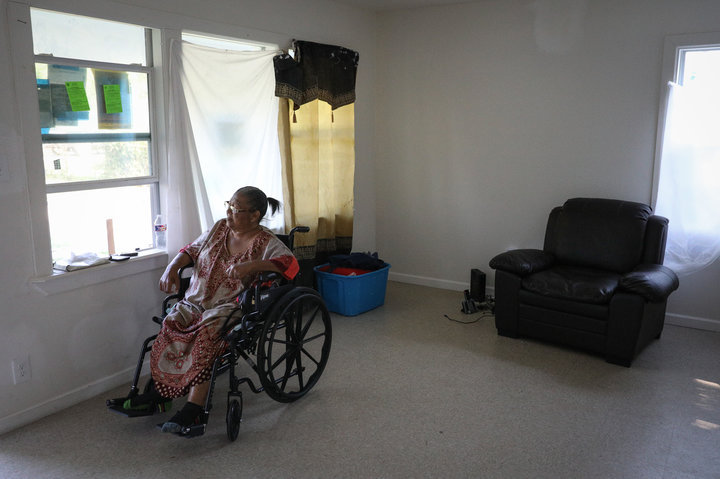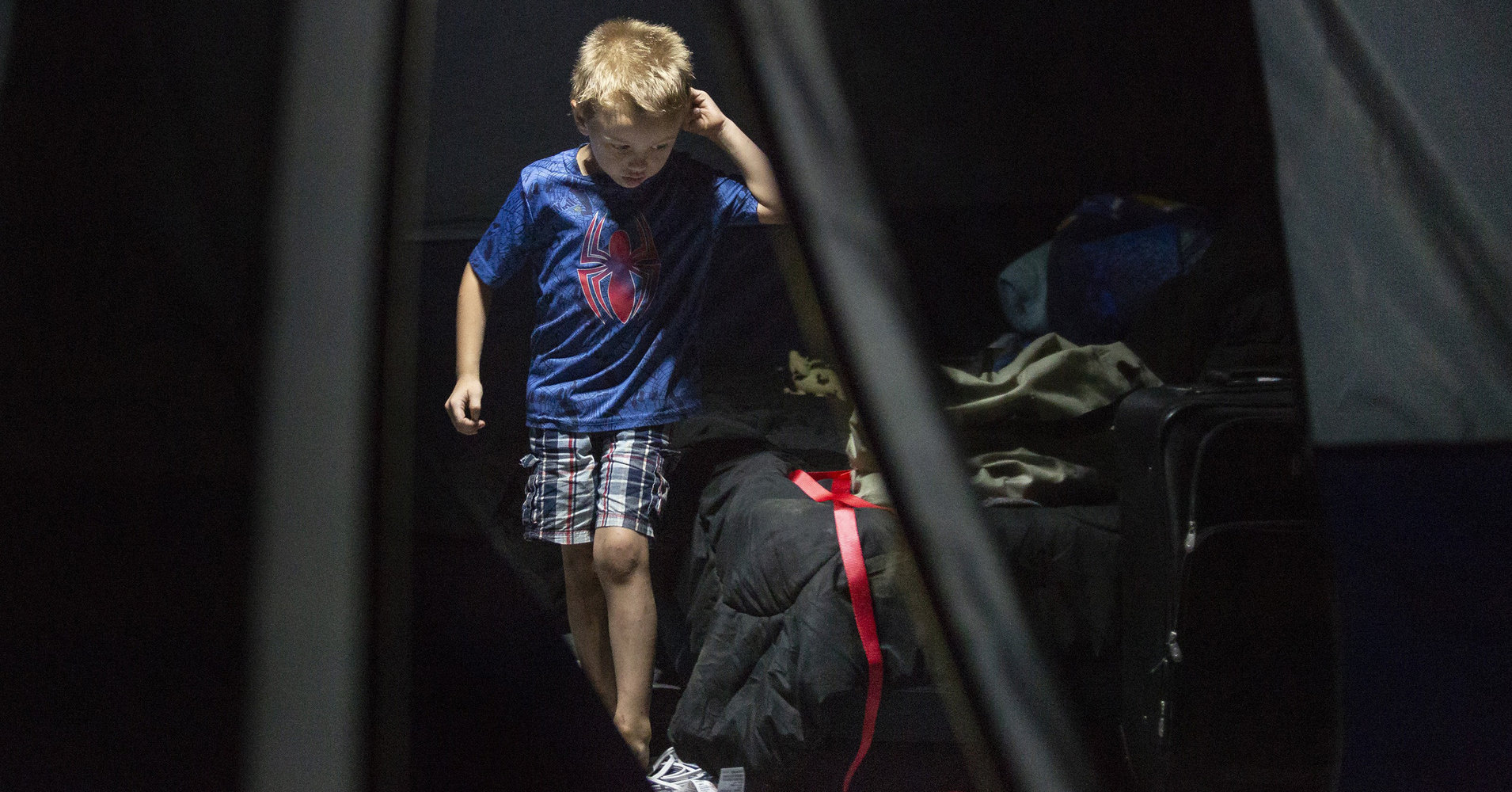[ad_1]
After Hurricane Harvey barreled through Kenneth Williamson’s three-bedroom home last year in the Fontaine Place neighborhood of Houston, the retired day laborer was devastated. At their height, floodwaters grazed Williamson’s knees and mold quickly developed throughout the house. His roof and floors were damaged and most of his furniture was destroyed ―and those were just some of the issues.
But Williamson, 62, was also somewhat hopeful. He figured he’d at least receive some funding from the Federal Emergency Management Agency to help rebuild the house that had belonged to his late mother.
Williamson applied for FEMA funds and underwent an inspection. Soon after, he received a letter informing him that his request for aid had been denied. The agency claimed his home was in habitable condition, Williamson told HuffPost.
“They told me to live in it,” Williamson said. “They said it was livable.”
Williamson then turned to RipleyBaker, a nonprofit that supports low-income Houston residents. The group has been working on Williamson’s home since December and has spent over $35,000 on repairs, said Rene Solis, senior vice president of public sector solutions at RipleyBaker. But even once the organization completes the job, the home won’t be 100 percent restored to its original condition, Solis said.
Williamson’s story is a common one in the wake of natural disasters: It’s often the poorest people who struggle the most to access federal dollars after a storm hits. Housing repairs typically are the most pressing need ― and also what they have the most trouble getting. That problem is cropping up again as people affected by Hurricane Michael begin to try to put their shattered lives back together.

Scott Olson via Getty Images
“There’s never a time when people need the federal government more than when their community has been wrecked by Mother Nature,” said Marion McFadden, senior vice president of public policy and adviser on resilience at Enterprise Community Partners, a nonprofit that creates affordable housing opportunities. “What we see is, the people who had the lowest income, and the greatest need for support before a disaster, are the ones who are slowest to recover.”
FEMA’s responsible for coordinating government-wide relief efforts after disasters hit, which starts with offering basic necessities in the immediate aftermath and then extends to addressing survivors’ more long-term needs, including housing issues. FEMA funds help impacted residents find temporary housing and restore damaged homes, but the agency isn’t responsible for addressing every repair issue. The organization just works to make residences habitable.
A major issue adversely affecting low-income residents is that FEMA focuses on supporting homeowners, not renters. Worsening the plight of low-income tenants is that they are often hit with rent hikes and mass evictions after a disaster.
Also, people who live in flood-prone areas but don’t have flood insurance are often denied help. And the bureaucratic process of applying ― and appealing ― is complicated.
Even when FEMA funds are awarded, it may just be a paltry amount. The agency has a cap on the amount of funds it can dole out, which varies from disaster to disaster, depending on how much damage occurred. After Hurricane Maria slammed Puerto Rico last year and caused especially widespread damage, FEMA contributed more than $3 billion to the recovery effort.
FEMA collaborates with a number of organizations, including the Department of Housing and Urban Development, which, in addition to working to repair damaged homes, trains workers who can help in the recovery phase. But there’s a “huge” gap in the amount of time it takes to receive HUD dollars, McFaddon said.
“It’s a long process,” said Solis, who added that it’s discouraging to him and his staff when they learn that a resident is denied government funding after a storm. “It frustrates us just as much as it frustrates the homeowner,” he said.

Joe Raedle via Getty Images
A month after Hurricane Michael slammed into the Florida Panhandle, residents affected it are now ensnared in a housing crisis that’s reminiscent of the one caused by Hurricane Harvey and so many other storms before it. In Panama City alone, where one in five people were already living in poverty, somewhere between 10,000 and 20,000 people have become homeless since the storm. In Bay County, where Panama City is located, 48,665 households have applied for FEMA aid.
Members of Florida’s congressional delegation requested that FEMA administrator Brock Long act “quickly” to approve direct housing assistance for areas affected by Hurricane Michael and to deploy resources “immediately.”
FEMA told HuffPost in an email that part of its 2018-2022 strategic plan includes streamlining its assistance efforts. The agency said it wants to better educate survivors about the application process to help them avoid delays and also to “manage expectations” so that recipients are aware what forms of assistance FEMA and its federal partners can actually provide.
The flood insurance problem remains a major sticking point.
Of about 5 million properties in flood hazard areas, fewer than a third are insured by the National Flood Insurance Program. On average, American homeowners pay about $700 a year for flood insurance premiums. The cost of flood insurance continues to increase, however, without taking household income into account.
Without flood insurance, residents are typically out of luck when it comes to accessing federal funds.
After Hurricane Harvey, numerous residents in Kashmere Gardens, a low-income Houston neighborhood hit hard by the hurricane, were denied FEMA benefits because they didn’t have flood insurance.
“A lot of residents are still struggling over a year after the storm. A lot of people are falling through the cracks in the community,” Keith Downey, president of the Kashmere Gardens Super Neighborhood Council, told HuffPost. “These communities were already making hard choices between food and medicine, long before this happened.”

Loren Elliott via Getty Images
In April, FEMA released a report that analyzed the cost burden of flood insurance and the populations most affected by it, and provided suggestions to help close the insurance gap.
While experts agree the report was valuable, they stress that follow-up action is needed.
“Congress gave FEMA the ability to study (the issue), but not the ability to do anything about it,” McFadden said.
McFadden, who has more than 15 years of experience in disaster recovery efforts, said the key to improving outcomes is addressing issues before a storm hits ― ensuring structures are built to withstand storms and creating tools to prepare tenants to deal with flooding and mold, for example.
She expressed optimism about some pieces of recent legislation. Congress this year awarded $16 billion to HUD solely for “mitigation” activities. That covers efforts that protect communities from damage that can be anticipated. Signed this month, the Disaster Reform and Recovery Act provides a steady stream of funding for officials to invest in better protecting their communities, instead of just relying on grants from year to year.
But changes like this are incremental, and much more needs to be done to better protect vulnerable communities, McFadden added.
“Disaster recovery is never going to be fast. That’s the very nature of the challenge,” she said. “We need to do a better of job of making sure that the safety net reaches everybody that’s been impacted. Every community you go to that’s been through it, there’s just such tremendous frustration.”
[ad_2]
Source link

